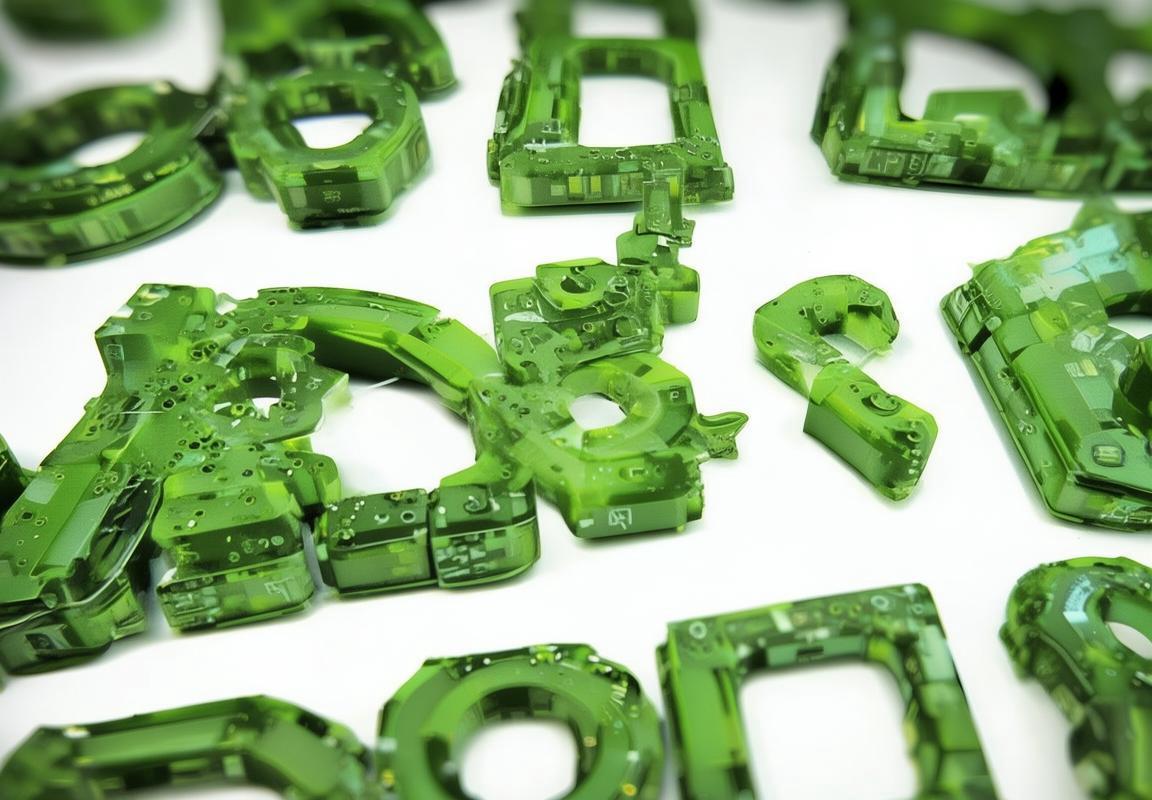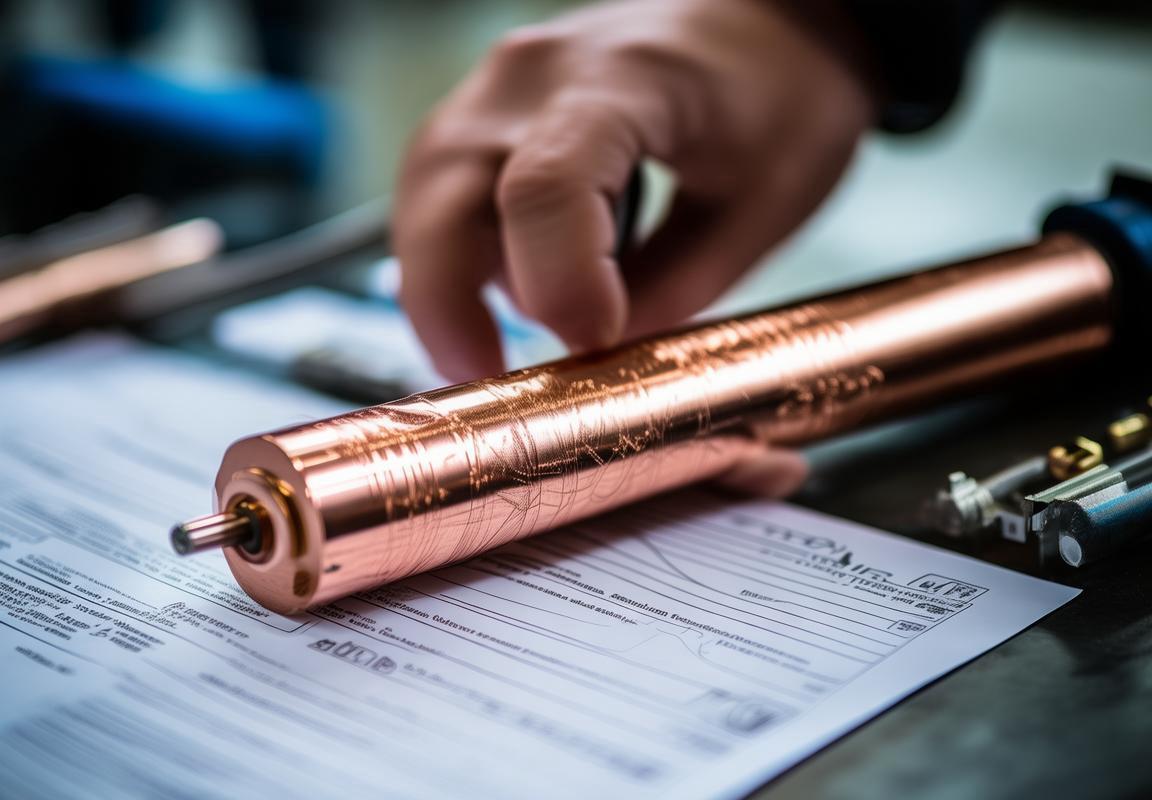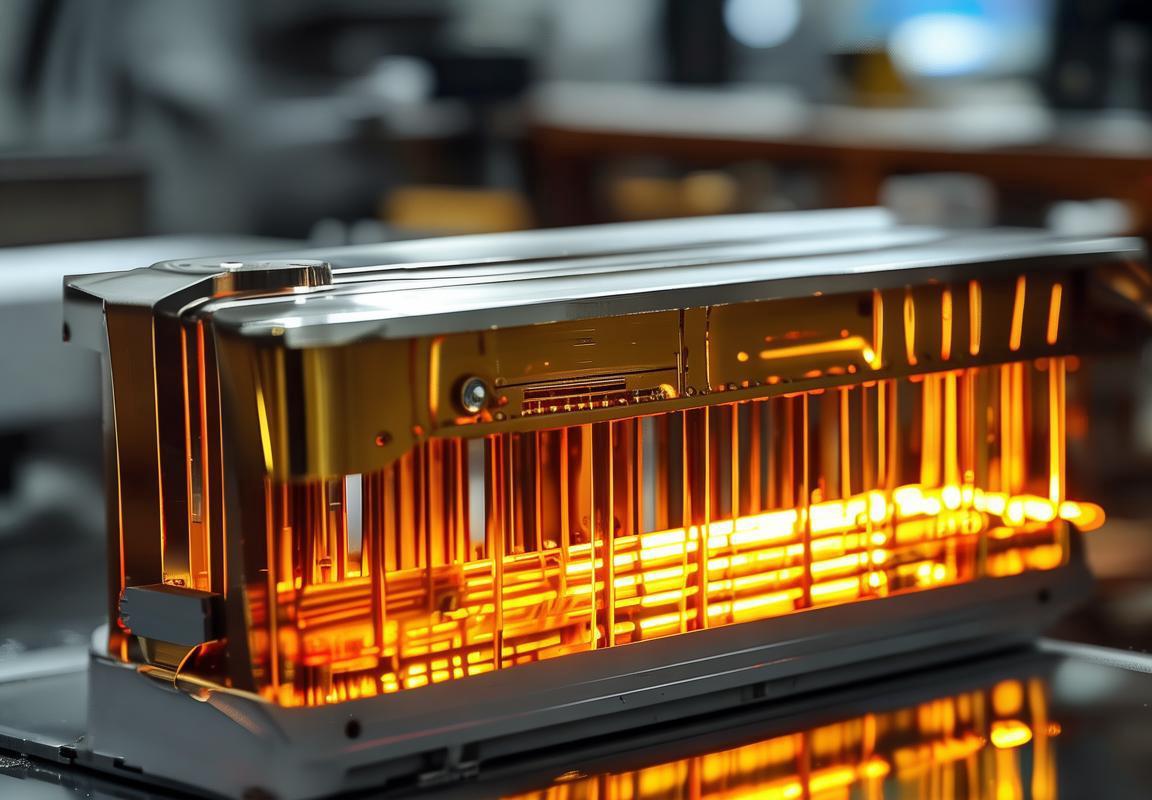In a world where environmental concerns are at the forefront of technological advancements, the adoption of RoHS compliant heating solutions has become not just a regulatory necessity, but a strategic choice for both consumers and businesses alike. This shift towards sustainability and safety in heating technologies has sparked a wave of innovation, transforming how we perceive and utilize heat in our daily lives. As we delve into the intricacies of RoHS compliant heating elements, it becomes evident that their impact extends far beyond mere compliance, offering a multitude of benefits that cater to the needs of a conscious and eco-friendly market.
Understanding the Importance of RoHS Compliance
In today’s fast-paced and highly competitive electronics market, the need for environmental responsibility has never been more pressing. One of the key factors in ensuring this responsibility is the RoHS directive, which stands for the Restriction of Hazardous Substances. This European Union legislation aims to eliminate the use of certain hazardous materials in electrical and electronic equipment. Within this context, understanding the importance of RoHS compliance is crucial for businesses, manufacturers, and consumers alike.
At its core, the RoHS directive was introduced to protect human health and the environment. By restricting the use of dangerous substances such as lead, mercury, cadmium, hexavalent chromium, polybrominated biphenyls (PBBs), and polybrominated diphenyl ethers (PBDEs), the directive seeks to minimize the impact of electronic waste on landfills and ecosystems. These substances can be highly toxic, persist in the environment for long periods, and pose significant risks to both human health and wildlife.
For businesses, compliance with RoHS is not just a regulatory requirement but also a strategic move. It signals a commitment to sustainability and social responsibility, which can enhance a company’s reputation and attract environmentally conscious customers. Moreover, adhering to RoHS standards can open up new markets, particularly in Europe, where the directive is strictly enforced.
The implications of non-compliance can be severe. Companies that fail to meet RoHS requirements may face penalties, including fines and the potential for their products to be banned from the European market. This not only impacts sales and revenue but can also damage a company’s brand and consumer trust. Additionally, non-compliance can lead to increased operational costs, as companies may need to invest in new production processes and materials that are RoHS compliant.
For manufacturers, the transition to RoHS compliant components can be a significant challenge. It requires a thorough understanding of the directive’s requirements and the ability to source or develop new materials that meet the standards. This often involves reevaluating supply chains, investing in new technologies, and training staff to ensure that products are free from restricted substances.
Consumers benefit from RoHS compliance in several ways. First, they can have confidence that the electronic devices they purchase are safer for their health and the environment. Second, the presence of RoHS-compliant products in the market encourages innovation and the development of greener technologies. Lastly, the directive promotes a circular economy by making it easier to recycle and reuse electronic equipment without the risk of harmful substances contaminating the process.
The scope of RoHS compliance is broad, encompassing a wide range of electronic and electrical equipment. This includes items such as computers, mobile phones, televisions, and even certain household appliances. Each product category has specific requirements for the levels of restricted substances allowed, making it essential for manufacturers to have a deep understanding of the directive and how it applies to their products.
The process of ensuring RoHS compliance involves several steps. First, manufacturers must identify the components and materials in their products that fall under the directive’s scope. Then, they must assess the quantities of restricted substances present and determine if they exceed the permissible limits. If necessary, they must develop a plan to reduce or eliminate these substances.
Certification is another critical aspect of RoHS compliance. Manufacturers often hire third-party certification bodies to conduct audits and provide a formal declaration of conformity. This certification serves as proof that a product meets the directive’s requirements and can be a valuable asset in marketing and sales efforts.
In recent years, the demand for RoHS compliant heating elements has grown. These elements are used in a variety of applications, from industrial heating to consumer appliances. The reason for this demand lies in the need for energy-efficient and environmentally friendly solutions. RoHS compliant heating elements are designed to operate with minimal energy consumption and without the use of harmful substances, making them an attractive choice for both manufacturers and end-users.
As the global community continues to prioritize sustainability, the importance of RoHS compliance is likely to increase. This is not just a European issue but a global one, as more countries adopt similar regulations. Businesses that fail to adapt to these changing standards risk falling behind competitors and missing out on valuable market opportunities.
In conclusion, understanding the importance of RoHS compliance is essential for anyone involved in the electronics industry. It is a reflection of a broader commitment to environmental stewardship and responsible manufacturing practices. By embracing RoHS standards, companies can not only meet legal requirements but also contribute to a healthier planet and a more sustainable future.

What is a RoHS Compliant Heating Element?
A RoHS compliant heating element is a crucial component in the modern electronics industry, designed to meet the stringent regulations outlined by the Restriction of Hazardous Substances Directive (RoHS). This directive, which came into effect in 2006, aims to restrict the use of certain hazardous materials in electrical and electronic equipment to protect human health and the environment.
These heating elements are specifically crafted to exclude or minimize the presence of six hazardous substances: lead (Pb), mercury (Hg), cadmium (Cd), hexavalent chromium (Cr6+), polybrominated biphenyls (PBBs), and polybrominated diphenyl ethers (PBDEs). By adhering to these restrictions, RoHS compliant heating elements play a pivotal role in reducing the environmental impact of electronic waste and ensuring the safety of consumers.
The core of a RoHS compliant heating element is typically made from materials that are free from the restricted substances. This includes using alternative metals such as tin, silver, and copper for soldering, which are safer and more environmentally friendly. The design of these elements often involves careful engineering to ensure that the heating process is efficient and effective without the use of harmful chemicals.
One of the key features of a RoHS compliant heating element is its thermal efficiency. These elements are engineered to convert electrical energy into heat with minimal energy loss, which not only conserves resources but also reduces the overall environmental footprint. The materials used in their construction are selected for their ability to maintain high thermal conductivity, ensuring that the heat is distributed evenly and effectively across the element.
In terms of manufacturing, RoHS compliant heating elements must undergo rigorous testing and quality control measures to ensure that they meet the directive’s requirements. This includes not only the absence of the restricted substances but also the integrity of the heating element’s performance. Manufacturers must document the composition of the materials used and provide certification that the product is RoHS compliant.
The versatility of RoHS compliant heating elements is another significant aspect. They are used in a wide range of applications, from consumer electronics like toasters and kettles to industrial equipment such as heating elements in furnaces and ovens. Their ability to be integrated into various devices without compromising safety or environmental standards makes them a preferred choice for manufacturers worldwide.
Moreover, the design of RoHS compliant heating elements often incorporates features that enhance their longevity and durability. This is particularly important in industrial settings where the heating elements are subjected to harsh conditions and frequent use. The use of high-quality materials and robust construction methods ensures that these elements can withstand the test of time and maintain their performance over the long term.
Another aspect to consider is the compatibility of RoHS compliant heating elements with other components. They are designed to work seamlessly with other electronic parts, ensuring that the overall system operates efficiently and safely. This compatibility is essential in maintaining the integrity of the entire product and ensuring that it meets the necessary safety and environmental standards.
Additionally, the market for RoHS compliant heating elements is continuously evolving. As new technologies emerge and regulations are updated, manufacturers are constantly innovating to produce more efficient and sustainable heating solutions. This includes the development of new materials and manufacturing processes that further reduce the environmental impact of these elements.
In summary, a RoHS compliant heating element is a specialized component that has been designed and manufactured to meet the strict guidelines set forth by the RoHS directive. Its adherence to these standards ensures that it is free from hazardous substances, making it a safer and more environmentally friendly option for a wide range of applications. The combination of thermal efficiency, durability, and compatibility makes these heating elements a vital part of the modern electronics industry’s commitment to sustainability and consumer safety.

Why Choose a RoHS Compliant Heating Element?
RoHS compliant heating elements are not just a regulatory requirement; they are a testament to the commitment to safety and environmental responsibility. Here are several compelling reasons why you should choose a RoHS compliant heating element:
Environmental Protection: The primary reason to opt for a RoHS compliant heating element is the environmental protection it offers. RoHS stands for Restriction of Hazardous Substances, and it restricts the use of certain hazardous materials in the manufacturing of electrical and electronic equipment. By choosing a RoHS compliant heating element, you are actively contributing to the reduction of lead, mercury, cadmium, hexavalent chromium, polybrominated biphenyls (PBBs), and polybrominated diphenyl ethers (PBDEs) in the environment. These substances can be harmful to ecosystems and human health if not properly managed.
Health and Safety: The presence of hazardous materials in electronics can lead to serious health risks. RoHS compliant heating elements ensure that the products using them are free from these harmful substances. This means that if a heating element is involved in a product that comes into contact with humans, such as a household appliance, there is no risk of exposure to toxic chemicals. This is especially crucial in products that are used in medical settings or in close proximity to children.
Regulatory Compliance: In many countries, including the European Union, compliance with RoHS is not just a suggestion; it’s a legal requirement. If your business operates within these jurisdictions or exports products to them, using RoHS compliant heating elements is mandatory. By choosing such elements, you avoid the risk of non-compliance, which can lead to fines, product seizures, or even the suspension of your business operations.
Longevity and Reliability: RoHS compliant heating elements are often made with high-quality materials that are designed to last longer and perform more reliably. The absence of hazardous substances means that the components are more resistant to degradation, which can extend the lifespan of the heating element and the overall product. This not only benefits the end-user but also reduces the environmental impact by reducing the frequency of product replacements.
Cost-Effective: While RoHS compliant heating elements may have a slightly higher upfront cost compared to non-compliant alternatives, the long-term benefits can outweigh this initial investment. By reducing the risk of product recalls, minimizing the environmental impact, and improving product reliability, businesses can save money in the long run. Additionally, the use of RoHS compliant materials can help businesses avoid the costs associated with non-compliance, such as legal fees and damage to reputation.
Innovation and Marketability: Investing in RoHS compliant heating elements can also drive innovation within your organization. As manufacturers seek to meet the stringent requirements of RoHS, they often develop new technologies and materials that can improve the performance and efficiency of heating elements. This not only enhances the product’s marketability but also positions your brand as one that prioritizes sustainability and responsible manufacturing practices.
Global Market Access: For businesses looking to expand into new markets, RoHS compliance is a significant advantage. Many countries have adopted similar regulations to protect their citizens and the environment. By ensuring that your heating elements meet these standards, you open up opportunities to sell your products in regions that value environmental responsibility and safety.
Consumer Trust: In an era where consumers are increasingly aware of environmental issues and health concerns, choosing RoHS compliant heating elements can help build trust with your customers. Consumers are more likely to purchase products from companies that demonstrate a commitment to sustainability and safety. This can be a powerful differentiator in a competitive market.
In conclusion, the choice to use RoHS compliant heating elements is a multifaceted decision that touches on environmental stewardship, health and safety, regulatory compliance, cost-effectiveness, innovation, marketability, global access, and consumer trust. By making this choice, businesses not only adhere to legal standards but also contribute to a healthier planet and a more sustainable future.

The Benefits of RoHS Compliance for Consumers and Businesses
RoHS compliance, or the Restriction of Hazardous Substances directive, is a European Union regulation that has far-reaching impacts on manufacturers and consumers alike. Choosing a RoHS compliant heating element offers numerous benefits, both for individuals using the product and for the companies producing them. Here are some of the key advantages:
End-of-Life Recycling and Environmental ProtectionWhen a product reaches the end of its life cycle, the environmental impact is a significant concern. RoHS compliant heating elements are designed without the presence of six hazardous substances: lead (Pb), mercury (Hg), cadmium (Cd), hexavalent chromium (Cr6+), polybrominated biphenyls (PBBs), and polybrominated diphenyl ethers (PBDEs). This means that when these heating elements are disposed of, they pose less risk to the environment and can be recycled more effectively. By choosing RoHS compliant heating elements, consumers and businesses contribute to a cleaner, more sustainable planet.
Health and SafetyThe health and safety of users are paramount, and RoHS compliant heating elements provide a safer product. The absence of hazardous substances reduces the risk of exposure to harmful materials, which can be particularly important in environments where the heating element is in close proximity to people. This is especially crucial in residential settings, commercial buildings, and industrial applications where the heating element may be used in spaces occupied by employees or customers.
Cost-Effective LongevityLongevity is a key factor in the cost-effectiveness of any product. RoHS compliant heating elements are built to last, reducing the frequency of replacements and maintenance. This not only saves money in the long run but also minimizes the waste generated by frequent product disposal. For businesses, this translates into lower operational costs, while for consumers, it means a more reliable and durable heating solution.
Regulatory Compliance and Market AccessFor businesses, adhering to RoHS regulations is not just about environmental responsibility; it’s also about market access. Many countries have adopted similar regulations to the RoHS directive, making it a global standard. By choosing RoHS compliant heating elements, companies can ensure that their products meet international standards, which is essential for exporting and competing in the global market. This compliance can also open doors to new markets and business opportunities.
Brand Reputation and Customer TrustConsumer trust is invaluable, and brands that prioritize safety and environmental responsibility often enjoy a competitive edge. By choosing RoHS compliant heating elements, businesses can enhance their brand reputation by associating with high standards of quality and ethical manufacturing practices. Consumers are more likely to purchase products from companies that demonstrate a commitment to safety and sustainability, which can lead to increased customer loyalty and positive word-of-mouth referrals.
Innovation and Technological AdvancementsThe push for RoHS compliance has spurred innovation within the heating element industry. Manufacturers are constantly seeking alternatives to hazardous substances, leading to the development of new materials and technologies. This not only benefits the environment but also results in improved performance and efficiency of heating elements. As a result, consumers can enjoy advanced heating solutions that are not only safe but also more energy-efficient.
Consumer Choice and Market DiversityFor consumers, the availability of RoHS compliant heating elements expands their choices. With a wider range of safe and environmentally friendly options, individuals can make informed decisions based on their values and preferences. This market diversity encourages competition and can lead to better products at competitive prices, ultimately benefiting the consumer.
Legal and Financial ProtectionCompliance with RoHS regulations also offers legal and financial protection. In the event of a product recall or a lawsuit due to hazardous material exposure, companies that have used RoHS compliant components can mitigate risks. This protection extends to consumers, who may have legal remedies if they are harmed by non-compliant products.
In conclusion, the benefits of choosing RoHS compliant heating elements are multifaceted. They encompass environmental protection, health and safety, cost-effectiveness, market access, brand reputation, innovation, consumer choice, legal protection, and financial security. For both consumers and businesses, these advantages make the choice to opt for RoHS compliance a smart and responsible decision.

How to Identify a RoHS Compliant Heating Element
Understanding the RoHS directive is crucial when it comes to identifying a RoHS compliant heating element. Here’s how to spot one among the many options available in the market:
The hallmark of a RoHS compliant heating element is its adherence to the strict regulations set forth by the Restriction of Hazardous Substances (RoHS) directive. This directive is a European Union (EU) regulation that restricts the use of certain hazardous materials in electrical and electronic equipment. A heating element that carries the RoHS compliant label has been rigorously tested to ensure it contains no more than the allowable limits of lead (0.1%), cadmium (0.01%), mercury (0.1%), hexavalent chromium (0.1%), polybrominated biphenyls (PBBs) (0.1%), and polybrominated diphenyl ethers (PBDEs) (0.1%).
One of the most straightforward ways to identify a RoHS compliant heating element is by looking for the RoHS mark or certification label. This symbol, often found on the product packaging or the heating element itself, serves as a visual indicator that the product meets the RoHS standards. Companies that have obtained this certification often display it prominently to assure customers of their commitment to environmental health and safety.
Inspecting the product’s documentation is another critical step. The technical specifications and compliance certificates should be detailed and clear, outlining the materials used and the test results that confirm the heating element’s RoHS compliance. If a company is vague about its compliance status or cannot provide the necessary documentation, it may not be RoHS compliant.
A careful examination of the heating element itself can also reveal compliance. Look for materials that are known to be RoHS compliant, such as copper, aluminum, steel, and certain types of glass. These materials are commonly used in heating elements and are less likely to contain restricted substances. If you find materials like lead solder, it’s a strong indication that the heating element might not meet RoHS standards.
In the realm of electronic products, certifications from reputable third-party organizations can be a goldmine of information. Organizations like TÜV Rheinland, Intertek, and SGS offer certifications that verify a product’s compliance with the RoHS directive. These certifications are often accompanied by detailed reports that can be reviewed to ensure the heating element is truly RoHS compliant.
When dealing with manufacturers or suppliers, ask directly about their RoHS compliance process. A reputable vendor should be able to provide a detailed explanation of how they ensure their products meet the RoHS standards, including the testing procedures and quality control measures they employ. This information can be a strong indicator of a company’s commitment to compliance.
In the digital age, the internet can be a powerful tool in your quest for a RoHS compliant heating element. Many manufacturers have websites that detail their compliance policies and offer digital copies of their RoHS certificates. By searching online, you can often verify a product’s compliance without ever leaving your desk.
Remember that while RoHS compliance is a significant factor, it’s not the only one to consider. The quality, efficiency, and suitability of the heating element for your specific application are also crucial. A heating element may be RoHS compliant, but if it’s not designed to meet your performance needs, it might not be the right choice for your project.
Lastly, it’s important to keep in mind that the RoHS directive is just one aspect of a broader environmental and health and safety framework. Other regulations and standards may also apply to your product, so it’s always wise to do thorough research and possibly consult with experts in the field to ensure that your heating element is not only RoHS compliant but also meets all applicable environmental and safety standards.

Innovations in RoHS Compliant Heating Technology
In the realm of heating technology, the push for environmental responsibility has led to the development of RoHS compliant heating elements. These innovations are not just about meeting regulations; they are about pushing the boundaries of efficiency, safety, and sustainability. Here’s a glimpse into the advancements made in this field:
Materials Science BreakthroughsThe heart of any heating element lies in the materials used. Innovations in material science have led to the creation of heating elements that are not only RoHS compliant but also more efficient and durable. For instance, the use of advanced alloys with higher thermal conductivity has reduced energy losses, ensuring that more heat is delivered to the intended application.
Smart Sensors IntegrationModern RoHS compliant heating elements often incorporate smart sensors. These sensors not only monitor the temperature but also adjust the heating output to maintain optimal performance. This not only enhances energy efficiency but also prolongs the life of the heating element by preventing overheating and damage.
Miniaturization and Design FlexibilityThe demand for compact and versatile heating solutions has driven the miniaturization of RoHS compliant heating elements. Engineers have developed new designs that are smaller, lighter, and more adaptable to various applications. This flexibility allows for heating elements to be integrated into a wide range of products, from consumer electronics to industrial machinery.
Energy Conservation TechniquesWith environmental concerns at the forefront, energy conservation has become a key focus in heating technology. RoHS compliant heating elements now feature advanced energy conservation techniques, such as phase change materials (PCMs) that can store and release heat as needed, reducing the overall energy consumption.
Improved Thermal ManagementThermal management is crucial for the performance and longevity of heating elements. Innovations in this area include better heat distribution and dissipation. Materials like ceramic substrates are used to provide excellent thermal conductivity and insulation, ensuring that the heating element operates efficiently without excessive heat buildup.
Enhanced Safety FeaturesSafety is paramount in any heating application. RoHS compliant heating elements now come with enhanced safety features, such as self-limiting capabilities that prevent overheating and potential fires. These features are a direct response to the environmental and health concerns associated with traditional heating elements.
Cost-Effective Production MethodsWhile innovation often comes with a price tag, advancements in production methods have made RoHS compliant heating elements more cost-effective. Through the use of automated assembly lines and lean manufacturing principles, the cost of production has been reduced without compromising on quality or compliance.
Customization and ScalabilityThe ability to customize heating elements to specific application needs is another significant innovation. Manufacturers can now produce heating elements that are tailored to the exact requirements of a product, ensuring optimal performance. This scalability allows for the production of everything from a single heating element to large-scale installations.
Integration with IoTThe Internet of Things (IoT) has opened up new possibilities for heating technology. RoHS compliant heating elements are now being designed to integrate with IoT platforms, allowing for remote monitoring, predictive maintenance, and energy management. This integration not only improves efficiency but also provides valuable data for businesses looking to optimize their energy use.
Regulatory Compliance Made EasyFinally, the latest RoHS compliant heating elements are designed with compliance in mind. They are easy to integrate into existing products without the need for extensive redesign or additional certifications. This ease of compliance ensures that manufacturers can meet environmental standards without disrupting their production processes or incurring extra costs.
In summary, the innovations in RoHS compliant heating technology are a testament to the industry’s commitment to sustainability and efficiency. From the materials used to the smart features integrated, these heating elements are not just meeting regulatory requirements; they are setting new standards for the future of heating solutions.

Regulatory Requirements and Certifications
Understanding the regulatory landscape is crucial for ensuring that products meet the necessary standards and certifications. The Restriction of Hazardous Substances (RoHS) directive is a key piece of European legislation that impacts the electronics industry significantly. Here’s a delve into the regulatory requirements and certifications associated with RoHS compliance:
The RoHS directive, formally known as Directive 2002/95/EC of the European Parliament and of the Council, was implemented to reduce the environmental impact of electrical and electronic equipment by eliminating the use of certain hazardous substances. These substances include lead, mercury, cadmium, hexavalent chromium, polybrominated biphenyls (PBBs), and polybrominated diphenyl ethers (PBDEs).
To be RoHS compliant, manufacturers must ensure that their products contain no more than the maximum concentration values for each of the restricted substances. These values are set at 0.1% (1000 ppm) for lead, mercury, and cadmium, and 0.01% (100 ppm) for hexavalent chromium, PBBs, and PBDEs. The RoHS compliance is not just about the final product but also extends to components and sub-assemblies used in the manufacturing process.
Certifications are a critical part of the RoHS compliance process. They provide assurance to consumers and regulatory authorities that a product meets the RoHS directive. Here’s a breakdown of the key certifications and regulatory requirements:
-
Type Testing: This involves testing a representative sample of the product to ensure that it meets the RoHS directive’s requirements. The test results are often used to create a Certificate of Conformity, which is provided to customers and regulatory bodies.
-
Production Monitoring: While type testing provides a snapshot of product compliance, production monitoring ensures ongoing adherence to the RoHS directive. This involves periodic sampling and testing of products during the manufacturing process to verify that they meet the specified limits.
-
CE Marking: The CE mark is a mandatory conformity marking for products sold within the European Economic Area (EEA). It signifies that a product meets all the relevant health, safety, and environmental protection requirements set forth by European legislation, including the RoHS directive.
-
Declaration of Conformity (DoC): A DoC is a formal statement by the manufacturer or their authorized representative that the product complies with all applicable RoHS requirements. This document is often included with the product documentation and serves as proof of compliance.
-
Notified Body Involvement: In some cases, a notified body may be involved in the certification process. These bodies are recognized by the European Union and can conduct the necessary tests and inspections to confirm compliance with the RoHS directive.
-
Documentation and Record Keeping: Maintaining thorough documentation of the design, materials used, manufacturing processes, and testing results is essential for RoHS compliance. This documentation can be crucial during audits or if a product is subject to regulatory scrutiny.
-
Global Harmonization: While RoHS is a European directive, similar regulations exist in other parts of the world, such as China’s Restriction on the Use of Hazardous Substances (China RoHS) and the U.S. Electronic Waste Export and Ban Amendment (E-Waste Rule). Manufacturers need to be aware of these global regulations and ensure their products are compliant across markets.
-
Impact on Supply Chain: RoHS compliance extends beyond the final product to include the entire supply chain. Suppliers must also adhere to the directive, and manufacturers must ensure that their components and materials meet the required standards.
-
Regular Updates and Changes: The regulatory landscape is not static. The RoHS directive has been updated and revised over time, and manufacturers must stay informed about any changes to ensure ongoing compliance.
-
Training and Awareness: Lastly, ensuring that all personnel involved in the design, manufacturing, and distribution processes are trained and aware of RoHS requirements is essential. This includes understanding the restrictions on hazardous substances, the importance of compliance, and the procedures for maintaining documentation and records.
In conclusion, the regulatory requirements and certifications for RoHS compliance are comprehensive and multi-faceted. They require a thorough understanding of the directive, meticulous record-keeping, and a commitment to maintaining a compliant supply chain. By adhering to these requirements, businesses can not only meet legal obligations but also demonstrate their commitment to environmental responsibility and consumer safety.

Case Studies: Successful Implementations of RoHS Compliant Heating Elements
In the realm of electronic manufacturing, ensuring that products are RoHS compliant is not just a legal requirement; it’s a mark of quality and sustainability. Here are some case studies that showcase successful implementations of RoHS compliant heating elements in various industries:
Environmental Responsibility at the Heart of Product DesignA leading appliance manufacturer understood the importance of environmental stewardship in their product line. By integrating RoHS compliant heating elements, they not only met international regulations but also appealed to a growing market segment concerned with eco-friendly electronics. Their commitment to sustainability led to a significant increase in customer loyalty and brand recognition.
Enhanced Safety Standards in Automotive ApplicationsIn the automotive industry, the use of RoHS compliant heating elements was crucial for ensuring the safety of vehicles. A case in point is a car manufacturer that replaced traditional heating elements in their dashboard heating systems with RoHS compliant versions. This change not only helped in reducing the risk of lead and other hazardous substances but also improved the overall performance and reliability of the vehicles.
Revolutionizing Industrial Machinery with RoHS ComplianceAn industrial machinery company faced the challenge of modernizing their product line while adhering to strict environmental regulations. By adopting RoHS compliant heating elements, they were able to produce more energy-efficient and durable machinery. This transition not only satisfied regulatory requirements but also resulted in cost savings for customers through lower energy consumption.
Healthcare Innovations with RoHS Compliant SolutionsThe healthcare sector demands precision and safety in medical devices. A medical equipment manufacturer replaced their old heating elements with RoHS compliant models in their patient monitors. This upgrade minimized the risk of patient exposure to harmful substances and enhanced the device’s lifespan, leading to better patient care and reduced maintenance costs.
Improving Air Quality in Commercial BuildingsIn the commercial sector, maintaining high indoor air quality is paramount. A building automation company chose RoHS compliant heating elements for their HVAC systems. This decision helped in reducing the release of harmful chemicals into the building’s atmosphere, creating a healthier indoor environment for occupants.
Electronics Recycling with a Greener ApproachWith the rise of electronics recycling, companies are looking for more sustainable materials. A recycling plant implemented RoHS compliant heating elements in their processing units. This move made the recycling process more environmentally friendly and ensured that the recovered materials were of higher quality.
Sustainable Farming EquipmentEven in the agricultural sector, RoHS compliance is making waves. A manufacturer of farming equipment replaced their standard heating elements with RoHS compliant ones. This not only met the needs of environmentally conscious farmers but also contributed to the long-term sustainability of the farming industry.
Global Supply Chain HarmonizationFor a multinational company, achieving RoHS compliance across different regions was a logistical challenge. By sourcing RoHS compliant heating elements from a trusted supplier, they were able to streamline their global supply chain, ensuring consistency in product quality and regulatory adherence.
Consumer Electronics with a Focus on SafetyConsumer electronics companies are increasingly focusing on safety and health. By incorporating RoHS compliant heating elements into their products, such as hair dryers and electric shavers, they have provided consumers with safer, longer-lasting appliances.
Energy Efficiency in Residential Heating SolutionsHomeowners are looking for energy-efficient heating solutions. A heating equipment manufacturer chose RoHS compliant heating elements for their radiators and furnaces. This choice helped in reducing energy consumption, leading to lower utility bills and a smaller carbon footprint.
Each of these case studies highlights the diverse applications of RoHS compliant heating elements across various industries. The common thread is the commitment to environmental protection, public health, and sustainable business practices. By embracing RoHS compliance, companies have not only met regulatory standards but also gained a competitive edge in a market that values responsibility and innovation.

The Future of RoHS Compliant Heating Solutions
In the ever-evolving landscape of technology and environmental consciousness, the future of RoHS compliant heating solutions is poised to bring about significant changes. As industries strive to meet stringent regulatory standards and consumer demands for sustainable products, the following aspects highlight the trajectory of these heating solutions.
The integration of smart technology is set to revolutionize the heating industry. With advancements in IoT (Internet of Things), heating elements can now be remotely controlled and optimized for energy efficiency. This not only enhances user convenience but also contributes to a more sustainable future by reducing energy consumption.
Renewable energy sources are becoming increasingly intertwined with heating technology. Solar panels, geothermal systems, and wind power are being harnessed to power heating elements, making them more eco-friendly. This synergy between renewable energy and heating solutions is expected to grow, offering a greener alternative to traditional fossil fuel-based heating methods.
Materials science is playing a pivotal role in the future of RoHS compliant heating solutions. Researchers are developing new alloys and materials that are not only RoHS compliant but also highly efficient and durable. These materials can withstand harsh conditions and are less prone to failure, ensuring a longer lifespan for heating elements.
Energy storage systems are gaining traction as a complement to heating solutions. With the ability to store energy generated from renewable sources, these systems can provide a stable and continuous power supply for heating elements. This not only ensures reliability but also allows for the utilization of excess energy during off-peak hours, further optimizing energy use.
The role of regulations in shaping the future of RoHS compliant heating solutions cannot be overstated. As standards become more stringent, manufacturers are forced to innovate and improve their products. This regulatory push is driving the industry towards more sustainable and environmentally friendly practices.
Consumer awareness and preference are also shaping the future. As consumers become more conscious of the environmental impact of their purchases, they are increasingly seeking out RoHS compliant products. This demand is creating a market incentive for manufacturers to invest in research and development to meet these expectations.
Collaboration between various stakeholders, including manufacturers, regulators, and consumers, is crucial for the successful implementation of future heating solutions. By working together, these groups can ensure that the latest technologies are integrated into heating systems in a way that is both effective and sustainable.
The global market for RoHS compliant heating solutions is expanding rapidly. As countries around the world adopt similar regulations to protect human health and the environment, the demand for compliant products is on the rise. This global trend is expected to continue, driving innovation and competition in the industry.
The emphasis on energy efficiency is a cornerstone of the future of RoHS compliant heating solutions. As the cost of energy continues to rise, efficient heating systems become more attractive to consumers and businesses alike. Innovations in heat exchange and insulation materials are making it possible to achieve higher efficiency without compromising on performance.
The integration of heating systems with building management systems (BMS) is another area of growth. By connecting heating elements to BMS, users can achieve greater control over their energy consumption and indoor climate. This level of integration not only enhances comfort but also contributes to overall energy savings.
The future of RoHS compliant heating solutions also involves a focus on safety. With the increasing complexity of heating systems, ensuring that they are safe to use is paramount. Manufacturers are investing in safety features and certifications to provide peace of mind to users.
Lastly, the concept of circular economy is gaining momentum in the heating industry. By designing heating elements to be easily recyclable and made from sustainable materials, manufacturers are contributing to a more sustainable future. This approach not only reduces waste but also helps to conserve natural resources.
In conclusion, the future of RoHS compliant heating solutions is bright, with a focus on innovation, sustainability, and user satisfaction. As technology continues to advance and consumer demands evolve, the industry is poised to deliver heating solutions that are efficient, eco-friendly, and safe.